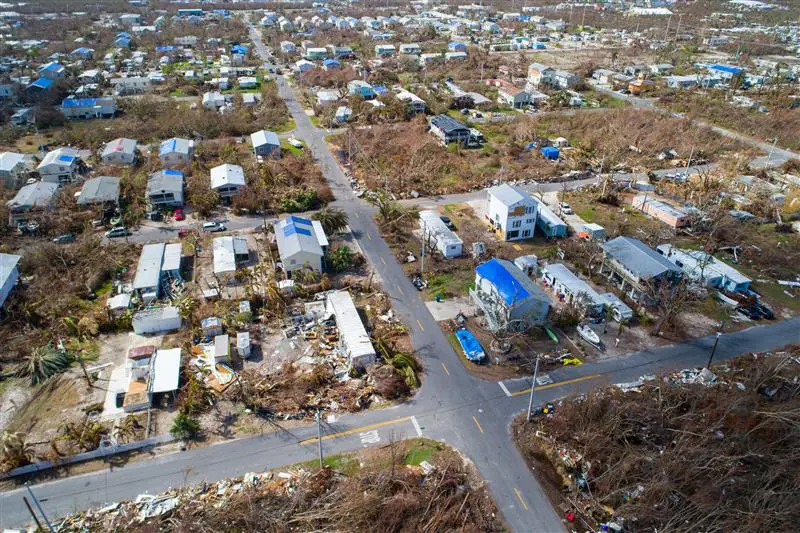Global professional services firm Jacobs has been awarded a program management contract to rebuild the U.S. Virgin Islands following hurricanes Irma and Maria.
According to a press release on Jacobs’ website, the company was contracted by the Virgin Islands Public Finance Authority to deliver program management services for the “Rebuild USVI” initiative. The contract is valued at $137 million and will see Jacobs work with the U.S. Virgin Islands’ Super Project Management Office on simultaneous, critical infrastructure projects, including hospitals, schools, transit corridors, power, water and wastewater utilities.
"Rebuilding is critical for St. Croix, St. Thomas, and St. John,” said Jacobs Executive Vice President Ron Williams. “The islands are home to nearly 90,000 people who depend on safe schools, reliable transportation, consistent utility services and access to healthcare. Further, with tourism as the economic engine, it's essential we prioritize efforts quickly and make the islands' infrastructure more resilient for the future."
During this three-year-contract, Jacobs – which has a long history of rebuilding critical infrastructure following severe weather events – will also provide advisory and consulting services focused on future project planning, environmental management, logistics, supply chain, and workforce challenges.
The Office of Disaster Recovery (ODR), operating under the Virgin Islands Public Finance Authority, manages the territory’s $23 billion in federal aid allocated following the devastating hurricanes of 2017. While progress has been made in the years since the hurricanes ravaged the islands, there is still much work to be done. Director Adrienne Williams-Octalien reaffirmed ODR’s dedication to the Super Project Management initiative, noting that Jacobs was chosen for the “Rebuild USVI” program due to its strong proposal response, proven expertise, competitive pricing, available resources, innovative approach, and strategic alliances.
Jacobs has supported efforts like the Port of San Francisco Waterfront Resilience Program, which is adapting 7.5 miles of the city's waterfront to be resilient to earthquakes, coastal storms and sea level rise; reinstating vital power infrastructure in the Philippines following devastating earthquakes; returning and maintaining essential services to the Puerto Rican community following Hurricane Maria; and continued on-the-ground assistance with FEMA disaster-related operations throughout the U.S. and its territories.
"We are excited to have Jacobs' support as we continue working to rebuild a stronger, more resilient community while ensuring full compliance with our funding requirements," Williams-Octalien said.

The Importance of Fortifying Our Infrastructure for Extreme Weather – and How GPRS Can Help
The changing climate has altered the landscape of risk for infrastructure globally. Rising temperatures, increased precipitation in some areas, and prolonged droughts in others present complex challenges that existing infrastructure was not originally designed to withstand. These changes have resulted in more frequent and severe weather events, from the flooding of major urban centers to the destructive paths of hurricanes across coastlines.
Elevating building foundations, using water-resistant materials, installing sump pumps and other flood mitigation systems can help protect buildings and their infrastructure from water damage during floods. Non-combustible building materials help reduce wildfire risks in fire-prone regions, and wind-resistant roofing and impact-resistant windows ensure structures can withstand high winds and flying debris in hurricane-prone areas.
Utility or grid hardening, the process of upgrading and strengthening utility infrastructure to make it more resilient to severe weather and other disruptions, can protect these critical utilities from a variety of weather-related issues. Communities across the country are undergrounding their power lines to reduce the risk of outages from wind, lightning strikes, and more.
But anytime you’re putting something new in the ground, it’s vital you’re aware of any buried utilities or other underground infrastructure assets that are already there.
GPRS is the nation’s largest company offering above and below-ground existing conditions documentation. We Intelligently Visualize The Built World® to keep your projects on time, on budget, and safe.
GPRS employs advanced technologies like ground penetrating radar (GPR) and electromagnetic (EM) locating to locate utilities underground, as well as post tension cable, rebar, and conduits and more within concrete slabs.
We geolocate and digitize these findings and deliver them to you through SiteMap® (patent pending), our project & facility management application that provides accurate existing conditions documentation to protect your assets and people.
Available 24/7 from any computer, tablet, or smartphone, SiteMap is a single source of truth for the critical data that allows you to protect your infrastructure from damage, whether you’re hardening a power grid or just conducting regular maintenance.
What can we help you visualize?
Frequently Asked Questions
Does GPRS locate PVC piping and other non-conductive utilities?
Yes, our SIM-certified Project Managers utilize a suite of infrastructure visualization tools, including ground penetrating radar (GPR) and electromagnetic (EM) locating, to find all types of subsurface materials. These tools compensate for each other’s weak points, allowing us to create an accurate, complete picture of your job site.
Will I need to mark out the utilities that GPRS locates?
No, our Project Managers locate and mark all utilities for you when conducting a utility locate. We have a variety of tools and markers we use to highlight the locations of utilities, underground storage tanks (USTs), and other buried items.



.svg)